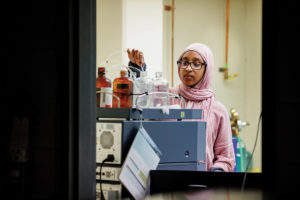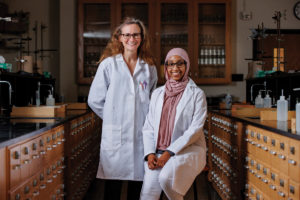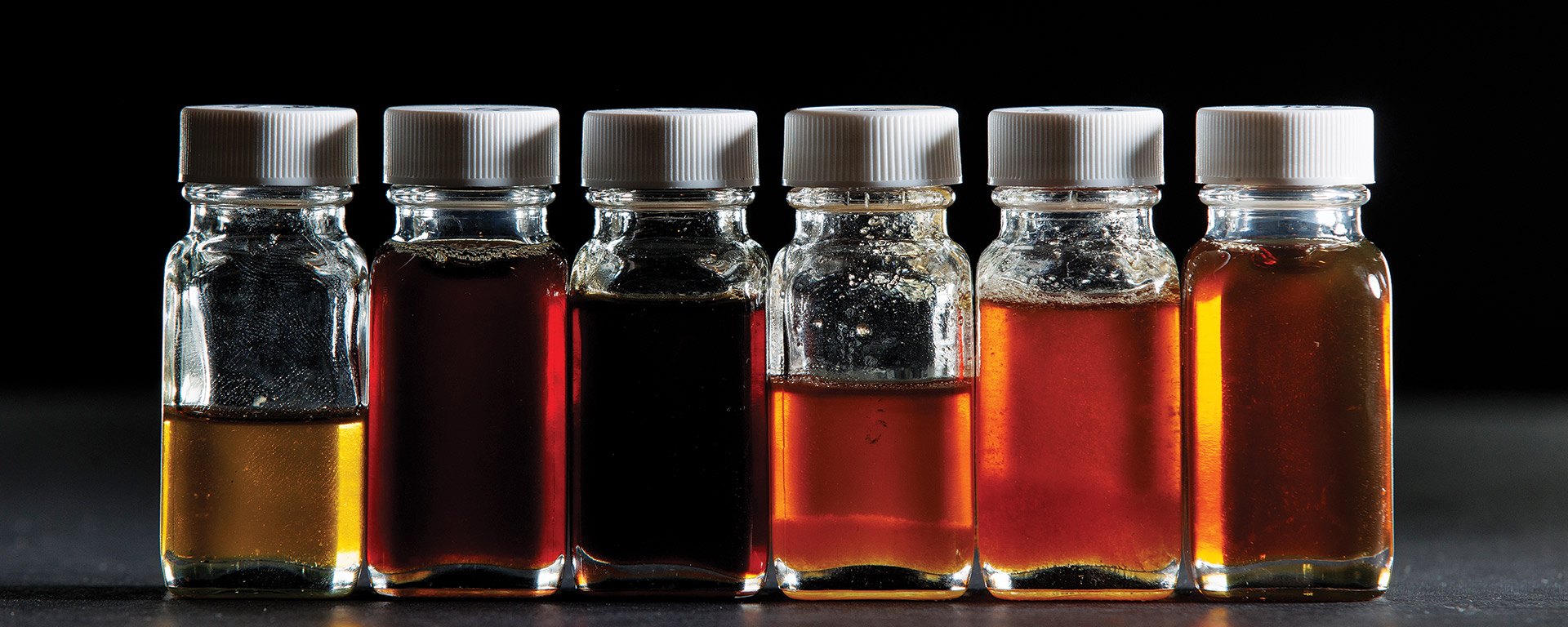Featured photo: Honey samples range the amber spectrum in the laboratory of UT Martin Associate Professor Abigail Shelton.
By Morgan Phillips | Photos By Nathan Morgan
Little vials filled with amber-hued liquids—ranging from pale yellowish, like oil, to deep and dark, like molasses—line the table inside the spectrometer lab at UT Martin.
Ebtisam Ahmed, a junior biology major and research student, picks up a sample and prepares to load it into the High-Performance Liquid Chromatography (HPLC) instrument. The samples are well-traveled, their origins ranging from the Himalayan mountains to Tennessee and from China to Costa Rica.
Honey—sticky, slow moving and sweet—fills the vials.
But honey is not simple. That’s the best part.
Ahmed, the fourth student to carry out the honey research project, works alongside Abigail Shelton, an associate professor of inorganic chemistry. Shelton and her students have slowly curated what she calls a “honey library,” with hopes to better understand the gooey, golden mixture.
“It’s a lovely material to study,” she says.
Honey’s complex blend of acids, metals and sugars result in many different components to examine. The team works to see if there are any links. For example, they look for correlation between a sample’s water or sugar contents and certain pollen, geographical origins or color outcomes.

In the lab, Ahmed runs each sample of honey through the HPLC to measure its sugar content and then through a refractometer to find its moisture content. She builds profiles for each honey sample to display its complex composition.
Shelton hopes that one day the honey library will be drawn upon for even more information, such as the extent of commercial processing. Beyond that, Shelton and Ahmed hope to delve into other aspects, such as its medicinal properties.
But, for now, they’re still just trying to understand the sticky substance.
“There’s this amazing appeal to studying something that hasn’t been all figured out,” says Shelton. “My favorite part of research is getting to share that, to teach that to a new mind.”
While Shelton wants to keep expanding the collective knowledge on honey, she wants Ahmed—or the next student—to get hands-on experience doing research.

“The hope here is to cultivate them as a research student,” Shelton says. “That aspect is, to me, the most important part of the research I do.”
Shelton hopes the experience she provides fuels comfort working in a laboratory, confidence in experimentation, assuredness in presenting to others and persistence through problems.
And that’s exactly what she gave Ahmed.
“Research with Dr. Shelton has taught me to be patient and that, when things don’t go your way, you don’t just stop,” Ahmed says. “You have to keep going. You adapt.”
These are lessons that could help the Ethiopian-born and Memphis-raised Ahmed in her future career in medicine. She hopes to return to Africa to help populations she feels deserve better medical care.
Shelton expects her own role, like honey, will be slow to expire.
“I selfishly hope it doesn’t stop,” she says of the research and hands-on student learning. “I hope that I always have these fabulous colleagues who bring me honey samples and that I always have the ability and enthusiasm to add more to what we know.”



